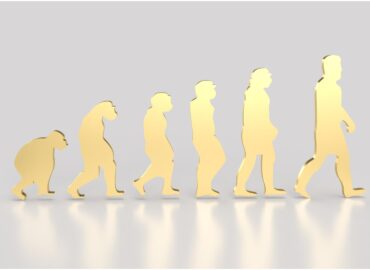Workforce Transformation with a 360° Competency Assessment: Build Future-Ready Teams Today
Workforce Transformation is no longer a buzzword—it’s your organization’s most urgent necessity. And if you’re still viewing talent development through a narrow lens, you’re missing the full picture. That’s where a 360 degree competency assessment comes in—it’s the game-changer you’ve been waiting for.
Let’s face it: In a world where skills expire faster than ever, your business can’t afford a workforce that isn’t fully aligned, future-ready, and constantly learning.
The Problem: You’re Flying Blind Without a 360° View
Do you know the real skill gaps in your organization? Not just the ones employees or managers think exist—but the actual, measurable, role-specific gaps that could cripple your competitive edge?
According to the World Economic Forum’s Future of Jobs Report 2023, 44% of workers’ core skills will change within the next five years.
That’s nearly half of your talent pool potentially operating on outdated capabilities. And still, many companies rely on once-a-year reviews or gut-feel feedback to make workforce decisions.
Transform Your Workforce with a 360° Competency Assessment
Now imagine this instead:
You have a clear, data-backed competency framework for your organization. You know what skills matter today and what will matter tomorrow. You have a live dashboard showing who’s ready, who’s lagging, and who can be upskilled.
That’s the power of a 360 degree competency assessment—it gives you a panoramic view of your people, competencies, and learning needs.
PeopleBlox In Action
The workplace is evolving. Fast. And without a real-time lens into workforce capabilities, you’re always one step behind.
Workforce Transformation isn’t just about technology—it’s about people. You need to know what they’re capable of, what they need to learn, and how to align that with your business goals. That’s where the competency framework for organizations comes into play—it maps everything from leadership traits to technical skills, and ties them directly to outcomes.
You want to be the leader who doesn’t just react to change—but drives it. With a 360 degree competency assessment, you’ll uncover hidden potential, accelerate skill development, and drive performance like never before. According to McKinsey, organizations that align learning with business strategy are 2.5 times more likely to be high-performing.
Ready to reimagine your talent strategy? Build a 360° view of competencies and launch your workforce transformation journey today.
What Is a 360° Competency Assessment?
Think of it as a mirror that reflects not just how your people see themselves—but how their peers, managers, and systems perceive their capabilities.
It evaluates employees across:
- Technical competencies (e.g., software skills, domain expertise)
- Behavioral traits (e.g., collaboration, initiative)
- Role-specific expectations
- Manager and peer feedback
- Learning behavior and performance
And here’s the kicker: It’s all mapped to your organization’s unique competency framework, ensuring you measure what truly matters.
Why You Need a Competency Framework for Workforce Transformation?
A competency framework for organizations defines:
- What success looks like in each role?
- What skills are critical at different levels?
- How to benchmark talent across business units?
When combined with a 360° view, it unlocks three transformative benefits:
- Precision Upskilling – Deliver learning paths tied directly to competency gaps.
- Role Readiness – Identify internal successors or lateral fits before hiring externally.
- Strategic Workforce Planning – Match business goals with evolving talent capabilities.
Let’s Talk Numbers: The ROI of Getting This Right
87% of companies say they face skill gaps or expect them in the next few years.
Organizations with mature competency-based frameworks are 63% more likely to outperform peers in productivity and retention. (Deloitte Human Capital Trends)
That’s not theory—that’s hard ROI.
Workforce Transformation in the Real World
Here’s a practical scenario:
A large manufacturing company struggled with digital adoption. Instead of sending everyone through the same learning modules, they used a 360° competency assessment to identify specific learning needs across functions—plant managers needed IoT literacy, while line workers needed tablet-based workflow training.
The result? 30% faster technology adoption, and a 25% improvement in job readiness scores within 6 months.
How to Start Your Workforce Transformation Journey?
- Define Your Competency Framework
Start with leadership, core, and role-based competencies. - Conduct a 360 Degree Competency Assessment
Involve managers, peers, and self-assessments with measurable criteria - Map Learning Needs to Gaps
Use intelligent learning recommendations and create tailored pathways - Measure Progress with Dashboards
Track readiness, skill coverage, and impact on performance. - Scale and Repeat
Embed it into your talent processes—from hiring to succession planning.
Excited Yet? You Should Be.
Workforce transformation doesn’t require a massive overhaul. What it does require is a sharper lens—a 360 degree view of competencies and learning needs that helps you lead with clarity, confidence, and agility.
Let’s not just manage talent. Let’s unlock it.



